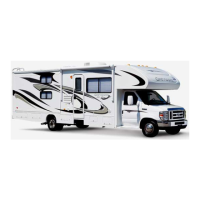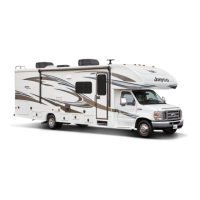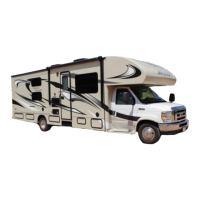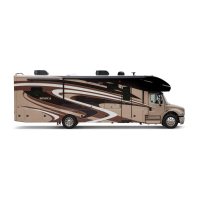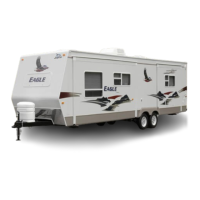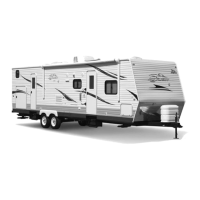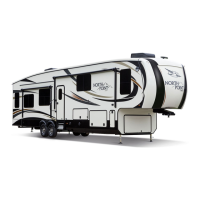THE LP FUEL SYSTEM
It is because of the LP gas system that your RV has the convenience of a refrigerator, stove,
water-heater, and furnace. This system has a tank that contains the fuel and also regulators to control
the pressure of the fuel and supplies the gas vapor to the various appliances. When correctly used,
the LP system is very effective and will ensure the comfort and added convenience for your vehicle.
This system is also potentially very dangerous and should be used with care.
Liquefied petroleum (LP) is a product that is refined from crude oil through natural gases. Propane is
a colorless and odorless gas that in the liquefied state resembles water. An odorant is added as a
warning agent. This is usually a sulfur compound which gives the gas the rotten egg, stinky, skunk
oil odor. It is extremely important to become familiar with the odor associated with LP gas.
LP fuel is stored in a pressurized canister in a liquid state. As the fuel is released from the canister, it
becomes vapor that is needed for the operation of the appliances. In the liquid state, propane should
not run through the appliances. A liquid fuel will damage the o-rings in the valves and also leave a
sticky, oily residue causing poor or no operation in the regulator.
LP Gas Tank
Under the floor of the motorhome is an A.S.M.E. (Fig. 4-27), a permanently mounted LP gas tank.
This photo indicates the components for filling and dispensing LP gas. The tank must be filled by a
qualified technician only. Because the LP gas tank is not removable, the motorhome will need to be
driven to an LP fill station. When filling your LP gas tank ensure that the technician knows and
understands safety and correct procedures. NEVER allow the LP gas tank to be overfilled. When the
LP gas tank is filled to 80% level, there is available space for safe expansion of the vaporized liquid.
If the tank becomes overfilled it may gain pressure due to exposure to direct sunlight and will begin
"blowing off" pressure from the relief valve. This can be detected by the strong odor around tanks.
Keep open flames away from this area.
I
CAUTION: DO NOT use tools or heavy equipment to open or close valves on the LP gas
tank. HAND TIGHTEN only.
46 Type C Owner’s Manual
Fig. 4-27
A = Gas Fill Valve
B = Relief Valve
C = LP Guage
D = Outage Valve
E = POL Adapter
F = Regulator
